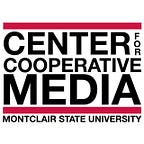As collaborative journalism expands, more attention should be paid to working with Indigenous communities
By Mariela Santos-Muñiz
As collaborations become more common among mainstream media outlets in the journalism industry, more needs to be done to diversify such projects. One area of opportunity are collaborations with Indigenous or tribal media.
A lack of coverage — or, worse, coverage by reporters that don’t have the right know-how—can have negative effects on any community, including in Indian Country.
The number of Indigenous journalists in the U.S. is not representative of the Indigenous population. A 2017 survey by the American Society of News Editors found that Indigenous journalists made up about 0.5 percent of the industry’s workforce, while Indigenous people, including those “mixed with other races” make up about 1.7 percent of the U.S. population, the National Congress of American Indians reports.
Collaborations can help to increase representation and bring attention to significant matters in Indigenous and tribal communities.
That is, if the collaborations are done equitably.
Collaborating the right way
Collaborations need to respect Indigenous journalists and their communities. This includes acknowledging the diversity among those Indigenous communities and the need for nuanced coverage.
“Indigenous media is sort of always in a golden age, since every once in a while, mainstream sort of finds it and realizes the power of what it can do and gets excited about it,” said Tristan Ahtone, associate editor for Indigenous affairs at High Country News, and citizen of the Kiowa Tribe. “There are more than two hundred Indigenous outlets across the country. We have a number of Indigenous affairs desks that are operating … Indigenous media is strong.”
Indigenous journalists need to be supported and able to own their work for collaborations to be successful. Equity is critical.
“It’s one thing to invite or accept Indigenous reporters to file for media outlets; it’s another thing to invite them to be a part of the group of body or the leader that makes the final editing decisions,” said Tara Gatewood, Isleta Pueblo/Navajo Host & Producer of the weekly nationally syndicated radio call-in show, Native America Calling.
Rebecca Landsberry, the executive director of the Native American Journalists Association (NAJA), noted that intentional and sustained effort is needed to understand Indigenous communities, rather than parachuting in and out.
NAJA is a membership-based organization with more than 600 members in Turtle Island — a non-colonized term for North America and Canada — according to Landsberry. There are more than 500 federally recognized tribes with different languages and cultures, in the U.S.
NAJA’s work is focused on education and promotion of correct, inclusive terminology, programs and resources for ethical coverage of Indian Country, and increasing the number of Indigenous journalists in the industry.
Examples of collaborations between mainstream and Indigenous media
NAJA has been leading collaborative efforts across its membership and is currently working with Report for America (RFA) on a project announced in January. That partnership supports 19 reporting positions across the country that focus on or include Indigenous affairs.
This initiative aims to strengthen local journalism in areas where Indigenous people play vital roles in the community.
The collaboration expands on NAJA and Report for America’s initial partnership, when NAJA began training RFA’s corps members. Both organizations will train statehouse reporters that cover states with large Indigenous populations.
Another pair of media organizations that are collaborating are The Associated Press and Indian Country Today. That content sharing partnership was announced in 2019.
“Indian Country Today’s membership in the AP enables the AP to run Indian Country Today’s reporting on their wire, and also enables Indian Country Today to run AP stories on their website,” noted a Columbia Journalism Review story about the arrangement. In addition, content that Indian Country Today shares from tribal media can also be picked up by The Associated Press.
“The partnership with AP and Indian Country Today is a really great example of what can be done, when people sort of think outside the box about that,” Ahtone said. “And obviously AP is getting some really fantastic content from ICT, and vice versa, so it becomes a relationship. But I don’t think that journalism often thinks in terms of relationships. I think journalism usually thinks in terms of what can I get from who and when.”
“In terms of collaboration, I think that collaboration and radical collaboration are kind of the future of this industry, if we are going to survive and we’re going to continue to do the work that informs people and is a public service, we have to think differently,” said Ahtone.
👋 Want to learn more about collaborative journalism?
You can subscribe to our collaborative journalism newsletter for more updates and information. And of course, we invite you to visit collaborativejournalism.org to learn more about the topic of collaborative journalism — including our growing database of database of collaborative journalism projects, which is currently being updated.
Mariela Santos-Muñiz is a freelance journalist. She graduated from Boston University with an M.A. in International Relations and International Communications, in addition to a B.A. from the Universidad del Turabo in Humanities in Puerto Rico. She is completely bilingual in Spanish and English. Find her on Twitter at @mellamomariela.
About the Center for Cooperative Media: The Center is a grant-funded program of the School of Communication and Media at Montclair State University. Its mission is to grow and strengthen local journalism, and in doing so serve New Jersey residents. The Center is supported with funding from Montclair State University, John S. and James L. Knight Foundation, the Geraldine R. Dodge Foundation, Democracy Fund, the New Jersey Local News Lab (a partnership of the Geraldine R. Dodge Foundation, Democracy Fund, and Community Foundation of New Jersey), and the Abrams Foundation. For more information, visit CenterforCooperativeMedia.org.
